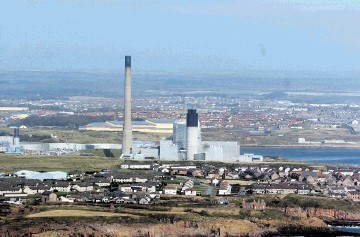
The £1billion Peterhead Carbon Capture and Storage project can help kick-start other CCS projects in the UK and make a significant contribution to reducing CO2, according to a leading industry expert.
Shell and SSE are looking to develop the world’s first full-scale gas carbon capture and storage (CCS) project and is in the running for a £1billion of UK Government funding.
Professor Stuart Haszeldine, of the University of Edinburgh, said Peterhead would act as the catalyst to kick-start other CCS projects in the UK and make a significant contribution to reducing CO2 emissions. He is a key member of Scottish Carbon and Storage (SCCS), the largest CCS research group in the UK.
He said: “Peterhead is an immensely valuable project. If it goes ahead – and there is no reason why it shouldn’t – it could kick-start investment in CCS in the UK and act as the catalyst.
“Shell has an excellent record of being able to deliver on these large projects. The only reason it could fail is if the government tries to change the rules and tries to get Shell take all the risk.
Up to 10 million tonnes of carbon dioxide emissions could be captured from the Peterhead Power Station and transported by pipeline offshore for long-term storage deep under the North Sea, which is the largest CO2 storage resource in Europe. It is seen by the UK Government as the ideal location for developing CO2 transport and storage infrastructure.
Prof Haszeldine added that calls for decommissioning to be brought forward were premature, as the existing subsea infrastructure had a vital role to play in developing carbon capture and storage potential.
“It is better to convert our subsea infrastructure, rather than decommission it. We have a ready-made framework for readily transporting CO2 into the reservoirs below the North Sea.”
Haszeldine, one of the UK’s foremost CCS experts, said the White Rose CCS scheme in Yorkshire, which is also in the running for Government funding, could become a “zombie project” following Drax power station’s decision to pull out, citing uncertainty over the UK Government’s green energy policies.
He said: “The White Rose project still exists but Drax leaving is not helpful. It demonstrates a lack of confidence in the British Government.”
“In the present climate of low profits for electricity companies, someone will have to put some extra money in. I don’t know of anyone who is in the frame to do that.”
A recently published report from SCCS – CO2 Multistore – suggested the secure and permanent storage of carbon dioxide (CO2) within a single geological storage formation can be optimised by injecting CO2 at more than one point simultaneously.
The SCCS report looked at the Captain Sandstone, within the mature oil and gas province offshore Scotland and contains the Goldeneye Field, which is the planned storage site for the Peterhead CCS project.
Findings suggest the Captain Sandstone, which lies more than a mile beneath the Moray Firth off north-east Scotland, could securely store at least 360million tonnes (Mt) of CO2 – the amount emitted by Scotland’s energy supply sector over 23 years.
Scottish Energy Minister Fergus Ewing, said: “This research confirms how the huge CO2 storage resource potential beneath the North Sea can be optimised, which, combined with the infrastructure already in place, again reinforces the huge opportunity for Scotland around CCS.
“CCS can contribute significantly to the diversity and security of electricity supply, and also has a unique role to play in providing a continuing supply of flexible clean fossil fuel capacity that is able to respond to demand in the way that other low-carbon technologies cannot.”
The study concludes that at least 360 million tonnes of CO2 captured over the coming 35 years could be permanently stored using two injection sites in the Captain Sandstone at a rate of between 6-12 million tonnes per year, using two injection sites.
Recommended for you
